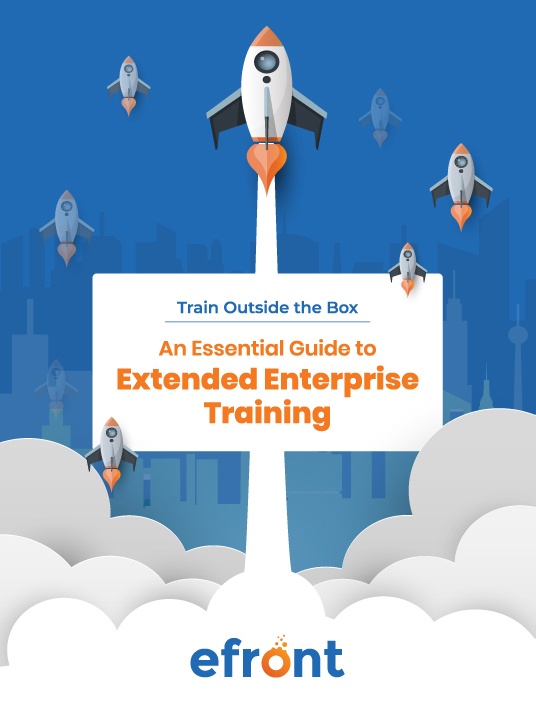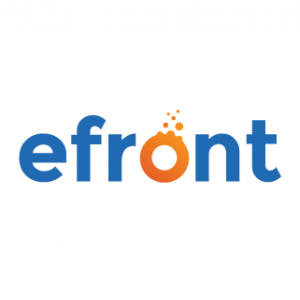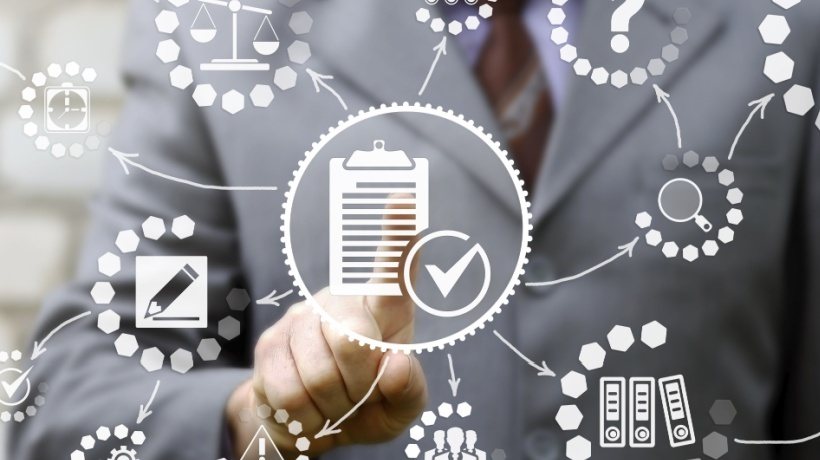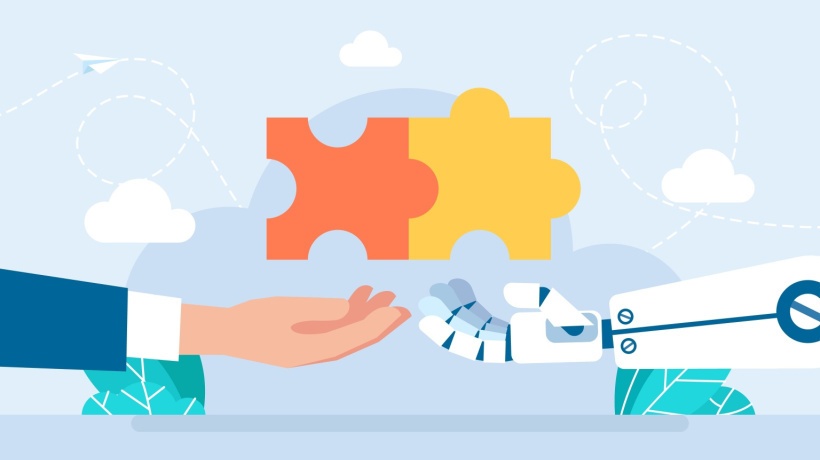Best Practices For Successful Channel Partner Training
#squadgoals. It was the rallying hashtag of the summer of 2015. Usually accompanied by a photo of a group of people (or animals) doing something admirable. Obviously, the only thing dogs have to do to be admirable is exist.

But, for a company to get the maximum benefits out of channel partner training, they need to do a bit more than just offering it.
In our previous articles, in this series on extended enterprise training, we took a broad look at the benefits and challenges of training the extended enterprise. Today, we're zooming in on partner training.
What Is Channel Partner Training?
For those unfamiliar with the term, channel partner training is training offered to anyone involved in selling, manufacturing, servicing, or in some way delivering your product or service. Like distributors, vendors, retailers, consultants, resellers, franchisees, contractors, and suppliers. You’ll also see this type of training referred to as partner training or partner enablement. In this article, we’ll use the terms interchangeably.
Challenges Of Partner Training
Every type of training has its unique set of challenges -and partner training is no different. One of the main challenges of training your partners is that they are not your employees. In this way, there is a divide in motivation, priorities, and needs between you (the parent company) and your partners.
Another challenge is that your partners are probably in many organizations around the world. On top of administrative difficulties in training so many segmented groups, you’ll also be facing language and cultural differences.
So, before you even begin setting up a partner enablement plan, you have to start by recognizing these differences and planning for them.
But why go through all the hassle to train masses of people who aren’t your employees? That’s a fair question. Near-sighted, but fair. The main reason for this type of training is a simple one: it will make your company better, stronger, and more prosperous.
How To Optimize The Benefits Of Partner Training
When you offer training to your channel partners, you’re essentially creating more knowledgeable, empowered, and up-to-date partners. This change will increase brand loyalty, ensure a consistently positive customer experience, boost sales, improve product speed to market, and ultimately, drive revenue higher.
But to capitalize on the benefits of training, you have to offer your partners the right kind of training. If your training isn’t targeted and thoughtful, you’re more than likely to miss out on all its benefits.
For your convenience, we’ve collected the best practices for partner training. These insights will help you focus your partner enablement plan where it matters: growth, reach, and profitability.
Best Practices For Successful Channel Partner Training
1. Start With Excellent Onboarding
Kickoff your entire partner relationship with a bang by providing an onboarding process that gets your new partners excited about choosing to work with your company. A robust onboarding process should encourage engagement, and this early engagement creates an overall positive impression of your company. Keep the momentum going, and you're more likely to retain partners.
A strong onboarding plan also gets your partners up to speed quickly. Instead of spending time figuring out your business processes, your product, and a host of other newbie questions, your partners can spend time jumping in to sell your product/service.
But what does an excellent onboarding program look like? It should mirror the onboarding you already offer your employees - adjusted for motivational and cultures differences. Ensure it is well-structured and concise.
2. Talk To Your Partners
As much as you know about your product, your sales, and marketing strategies, and even your customers, there is still much you can learn from talking to your actual partners. Their input can be leveraged to improve your business processes and partner enablement plans. Whether you call them on the phone, use a survey, or put together a formal Partner Advisory Council, find a way to talk to your partners. Ask them what they need from you, listen, and then deliver.
3. Let Your Partners Talk To Your Experts
Your company has dozens, if not hundreds, of employees that are experts in your product/service. There’s your research and development team who knows every detail about the way your product is made; there’s your marketing team that knows how to sell it best, and there are your customer success teams that know what challenges customers are dealing with.
Don’t hide your experts behind the four walls of your business. Instead, make them available to your partners so that they can capitalize on their knowledge and skills.
4. Create Targeted And Customized Training
Partner enablement will enable no one if it’s not laser-focused on the market your partners serve. Would it be easier to offer all your partners the same training material? Sure. But if you are considerate of basics like culture and language, and then more advanced needs like marketing strategies -your partners will be even more successful.
For example, instead of offering a one-size-fits-all marketing campaign for your entire channel of partners to push, it would be better to create a training program that teaches your partners to market more effectively. In this way, you’re not only enabling them; you are empowering them.
5. Offer Appropriate Incentives And Rewards
Put down the branded sweatshirt. Same with that mug. Yes, the pens must go too. When you want to offer incentives to your channel partners you need to step up your game. These types of meaningless rewards will not motivate your resellers, distributors, or other partners.
Instead, keep the rewards fresh, desirable, and regular. Start early during onboarding by offering training completion certificates, and activating gamification on your Learning Management System. Both incentives and reward programs are a way to keep engagement up.
6. Deliver Training Using The Right Technology
The tool you use to deliver your partner training can be almost as valuable, if not more valuable, than the content of your training. Look out for a Learning Management System (LMS) that is easy-to-use, so that all learners, at varying levels of tech-literacy, can use it.
But also look for one that is flexible enough to support your many different channel partners. An LMS that is fully-customizable, like eFront, can deliver targeted partner training in exactly the way you want.
A note on mobile: In many parts of the world, it’s much cheaper and easier to own a smartphone or tablet than it is a desktop or laptop. If your LMS doesn't have a native mobile app, many of your partners won’t have access to it.
7. Integrate Systems For Happy Administration
Keeping your partners knowledgeable and up-to-date is only one piece of the puzzle. You also have to make sure they’re happy. While excellent onboarding can make an excellent first impression (as noted above), you have to make sure the systems you have in place are also easy to use. That’s where integration comes in. Make sure the systems you share with your partners offer smart administration and good User Experience. Single sign-on (SSO) should not be optional, but a necessity.
The easier it is for your partners to access your training, the more likely they will use it. The more likely they use your training, the more likely they are to keep pushing your product/service to their customers.
8. Schedule Regular Health Checks
The best partner enablement plans do not follow a one and done strategy. Instead, they are regularly and consistently analyzed, audited, and improved. Check in with your partner program by reviewing every element of your framework from training and administration to Return On Investment.
- Training health check
Check program participation and usage and whether your rewards are rewarding the right behavior. Make sure to compare your training date to your sales date. In this way, you can find any weaknesses in your training. - Administration health check
Evaluate the processes you’re using and consider ways to automate or simplify tasks that are producing an administrative burden. - Return On Investment health check
The health of your Return On Investment is an important metric to keep an eye on regularly. Because if you’re not measuring Key Performance Iindicators (KPIs) then you have no real way to know if your training is helping.
At every health check, make sure you measure the right KPIs, the ones that will tell you the information you want to know. Some revealing KPIs to track is the number of partners trained, revenue through partners, partner engagement, partner profitability, and customer satisfaction with your partners. These metrics are a good measure of whether your partner enablement plan is healthy or not.
Conclusion
Now that you have read this essential article about partner training, you’ll be able to look at your current or future partner enablement plan and ensure you have all the pieces to make it a success.
Don’t forget that partner training, like all relationships, needs both partners to work. By listening to your partners’ needs, and then delivering the kind of training they ask for, you’ll do more than enable and educate them. You’ll empower them to be one of your best brand ambassadors. And isn’t that your ultimate squad goals?
If you want to be an A-plus student:
Before you close this tab, look at the list of best practices and jot down the ones missing from your channel enablement plan. Then, visit our website to discover more about eFront, the high-performing flexible LMS ideal for partner training.










